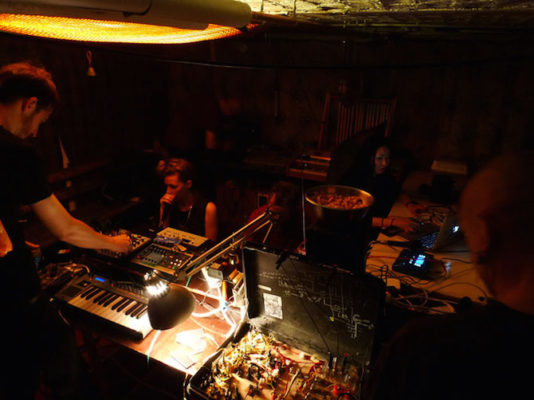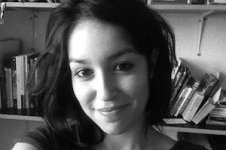Search
To search for an exact match, type the word or phrase you want in quotation marks.
A*DESK has been offering since 2002 contents about criticism and contemporary art. A*DESK has become consolidated thanks to all those who have believed in the project, all those who have followed us, debating, participating and collaborating. Many people have collaborated with A*DESK, and continue to do so. Their efforts, knowledge and belief in the project are what make it grow internationally. At A*DESK we have also generated work for over one hundred professionals in culture, from small collaborations with reviews and classes, to more prolonged and intense collaborations.
At A*DESK we believe in the need for free and universal access to culture and knowledge. We want to carry on being independent, remaining open to more ideas and opinions. If you believe in A*DESK, we need your backing to be able to continue. You can now participate in the project by supporting it. You can choose how much you want to contribute to the project.
You can decide how much you want to bring to the project.

Last week in the article titled “How to listen through discourse?” Sonia Fernández Pan questioned the dynamics of contemporary sound-art, querying the possibility of understanding the experience of sound art through discursive theory –and within the framework of a space-. But what if sound was the actual discourse?
More than a century ago a means of communication was created that, unlike other technologies (and despite them) continues to be strangely in force: the radio. This permanence is due, amongst other reasons, to having become over the years a multi-faceted means of communication, including amongst its possibilities, the provision of information, being a political tool as well as an artistic instrument.
The use of radio as a tool for the composition and dissemination of art-sound pieces has been since its beginnings (at the end of the twenties) an important artistic practice. In some way this practice also enabled radio to survive the technological revolution of the nineties and continue to develop today. Those art-sound projects based on the democratic qualities of radio remain current now, establishing an exhibition space for sound or as a piece of radio art, as the Futurists proposed at the beginning of the 20th century, and as would be implemented later by others, such as Jean Tinguely, Vito Acconsi or John Cage, amongst many other artists.
From a political perspective, it is from the seventies onwards, after a long, conflictive history surrounding the privatization of radios, when the so-called “free radios” are born in Europe, defending free, independent, non-profit broadcasting. These radio channels, like the pioneering Radio Alice in Bologna, signified a new type of freedom, transforming themselves into interdisciplinary spaces for communication, counter-culture, activism, and resistance to the hegemonic discourses of both art and politics. They also became the ideological base for projects of radio-art currently being developed.
The name Radio Art refers to sound pieces that use radio as a means of creation or diffusion. It is an artistic practice full of metaphors, amongst them, the radio as an instrument and sound as a language. A radio piece can be any type of sound emitted by a radio for artistic aims, be it an abstract composition (also called soundscape), sound poetry, noise music, sound articles or voice performances, amongst many other styles.
In the year 2006, the Swiss musician Jonathan Frigeri founded Zonoff in Geneva, moving the project two year later in Berlin, and has ended up becoming firmly established at the heart of the alternative scene in the German capital.Zonoff is an independent platform that creates and promotes experimental music and sound art through different formats, such as festivals, editions, and in particular radio projects. Since its origins, Zonoff has organised multiple radio programmes, some of them itinerant, with international artists, live performances and simultaneous radio broadcasts. These projects have been constructed implicitly around the idea of creating a community, an aim rooted fundamentally in the origins of radio. Brecht writes in “Radio as an Apparatus For Communication” (1932) about an active audience, highlighting the importance of the possibility of communication through radio, above that of distribution.
Radio Picnic is perhaps the largest radio project organised by Zonoff, and reflects the artistic and curatorial principles upon which it is based. It is a residency, curated by Selene Mauvis and Jonathan Frigeri, for musicians, artists and researchers who work with the radio format, to explore its social and music-sound possibilities. During the week of the residency, the artists live alongside the organisers, generating in this way an intimate moment of creative exchange, to end up making a radio programme broadcast live onLaptopradio, and later re-broadcast on Freiesradio in Berlin and Potsdam, as well as the Radio Arte Mobile in Rome. In the final broadcasts different sound strategies, such as voice, found sounds, music, soundscape, errors, sound tests, poetry, and soundcollage, amongst others are collaged together.
The projects realized up until now in Radio Picnic have been varied, but they all have in common the importance of the creative process and the actual experience, over and above the final result. It is based on a non-hierarchical, communal process, which on the one hand questions the presence of an institution in sound projects and the role of the curator in the dynamics with the artists, and on the other, defends the function of the radio as an artistic medium for communication that is free and public. The latter is a key point, in as much as the radio format here manifests itself as collective, in the collaborative creative process as much as in its transmission and reception. That is to say, with the same principle of community as in Brechtian thought, which united the very first free radio broadcasts in the seventies from Italy and France, but this time with a discourse of sound closer to the work of Cage and the manifesto of Russolo from 1913, that called for “the conquering of the infinite variety of sounds-noises”[[Luigi Russolo. L’Arte dei Rumori, 1913]].
They are works that begin and end with sound, which should be understood through listening, and there is precisely where the discourse lies. It is a type of performance, where sound passes through the radio, capable of reaching all spaces, or as Frigeri proposed, “to visit the listeners in their own kitchen”.
At a time when we can do practically everything by Internet, one could question the specificity of radio as a means to traverse linguistic and geographic frontiers. And yet, it is precisely because of this excess of visual information promoted in particular by and through the Internet that sound creations signify another performative modality, one which in turn enables the dynamics of a unique reception.

Daniela Hermosilla is an artist and art historian, depending on the moment one more than the other. She observes, writes, makes and investigates artist’s publications, from her doctoral thesis as well as within her work in the collective Greta Rusttt. She considers this permanent mobilization between theory and artistic practice essential and inseparable to establish her critical stance in a transversal way.
"A desk is a dangerous place from which to watch the world" (John Le Carré)